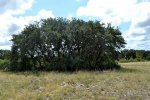Kandoloh
Shohin
hey yall I was just wondering if live oaks can be air layered? I have read most oaks don't do well from cuttings, how about air layer?
Haha well yea! Ok more specifically Quercus virginiana.I think dead oaks are hard to airlayer, so live one's would be preferred
I did but thought I would ask here too. I will be collecting some acorns this fallDo some research the only way to propagate an oak is from none other but the walnut.
Quercus virginiana.
I don't think it's native, but I'm not sure, they look so similar it's hard to tell as a novice.If it is a native oak your live oak is likely quercus fusiformis (escarpment live oak - named for the balcones escarpment in central texas) very similar to quercus virginiana
As for propagating it by cuttings or air layer the dirr book mentioned above (at least my edition) doesn't describe the method they used to root the cuttings, only that it was done froM a green house plant that was once a rooted cutting and maintained in a greenhouse. That tells me they root in very low numbers and juvenility is a factor. (Seedlings or saplings root much more easily). oaks in general are hard to clone.
As for the air layer. I confess I know very little about it. It's mostly a bonsai propagation thing. I'll let someone else jump in
I don't think it's native, but I'm not sure, they look so similar it's hard to tell as a novice.
 I've had a Q. fusiformis bonsai for a while. I've not tried to air layer it or take cuttings from it. However, what I have noticed is that it throws clone shoots from its roots quite readily and reliably every year from specific sites on the surface.
I've had a Q. fusiformis bonsai for a while. I've not tried to air layer it or take cuttings from it. However, what I have noticed is that it throws clone shoots from its roots quite readily and reliably every year from specific sites on the surface.I think he's just trying to make the distinction that "clone" usually refers to an independent organism that is genetically identical, so if you remove one of those runners, it would be a clone, but while its attached it's more like an appendage of the parent tree. A branch is genetically identical to the trunk, but you don't call it a "clone" unless you cut it offThey are clones--they become genetically identical trees.
I think you mean acorn.Do some research the only way to propagate an oak is from none other but the walnut.
Haha, yep; excellent.
